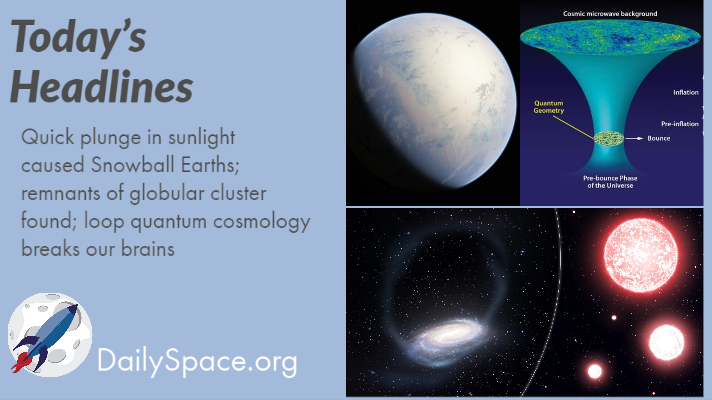
Aug 17, 2020 | Daily Space, Our Solar System, Stars
Join us today as we take another look at the dimming antics of Betelgeuse, which is up to those old tricks again. Research from Hubble helped understand last winter’s event. And Ganymede is covered with one massive crater as a result of a giant impact four billion years ago.

Aug 4, 2020 | Cosmology, Daily Space, Galaxies, Mars, Neutron Stars / Pulsars, Star Forming Region
Join us today as we talk about newly released research that suggests the waters on ancient Mars were subglacial and not free-flowing. Also, a black hole goes dormant and star formation goes wild. Meanwhile, computer models show that unequal neutron stars colliding may cause a big “bang” that can be detected on Earth.

Aug 3, 2020 | Daily Space, Galaxies, Neutron Stars / Pulsars, Our Solar System, Quantum, Stars, Supernovae Remnants, White Dwarfs
Join us today as we look at how quantum mechanics and Einstein’s theory of general relativity work together in white dwarfs. Machine learning is used to find a galaxy with an extremely low abundance of oxygen. Scientists find signs of a neutron star in supernova 1987A. And researchers managed to locate two recently arrived meteorites in Australia with the help of fireball detection cameras.

Jul 30, 2020 | Cosmology, Daily Space, Earth, Globular Cluster
Join us today as we go back in time and examine what caused Earth to become a snowball… more than once. We also take a look at a dismembered globular cluster found at the edge of the Milky Way. And finally, Dr. Pamela gets to explain loop quantum cosmology. Wish her luck!

Jul 28, 2020 | Daily Space, Star Forming Region, Stars, The Sun
Join us today while we take a look at the final data set released by the RAVE spectroscopic survey of stars in the southern hemisphere. Also, scientists at Harvard’s CfA have characterized the “central engine” of a solar flare from our Sun. And finally, scientists in Europe observed a parent cloud feeding material to a pair of young stars.

Jul 23, 2020 | Daily Space, Exoplanets, Galaxies, Supernovae, Very Large Array, White Dwarfs
Join us today as we learn that galaxies have magnetic fields, too. Also, scientists are excited to catch the ultraviolet flash of a type Ia supernova and directly image a multi-planet extrasolar system. Finally, researchers have developed a new method for finding “lost” worlds in NASA TESS data (but no dinosaurs, thankfully).








 We record most shows live, on Twitch. Follow us today to get alerts when we go live.
We record most shows live, on Twitch. Follow us today to get alerts when we go live.